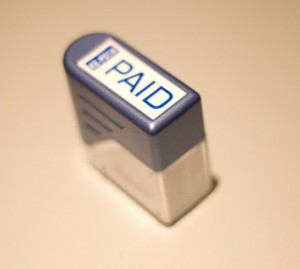 There was a time in the not so distant past when publishers were afraid of sponsored content. Fears that publishing content which was paid for by an advertiser would negatively affect sites’ Google search rankings and traffic gave digital sponsored content a bad reputation. Add ethical concerns and legal issues (e.g., the U.S. Code of Federal Regulations states that sponsored content must be disclosed as such) to the mix, and sponsored content was dying a quick death.
There was a time in the not so distant past when publishers were afraid of sponsored content. Fears that publishing content which was paid for by an advertiser would negatively affect sites’ Google search rankings and traffic gave digital sponsored content a bad reputation. Add ethical concerns and legal issues (e.g., the U.S. Code of Federal Regulations states that sponsored content must be disclosed as such) to the mix, and sponsored content was dying a quick death.
However, it wasn’t time to shut the doors on sponsored content yet. Today, the more buzzworthy term for sponsored content is native advertising, and it’s bringing in big advertising revenues for online publishers. Brands get in front of targeted audiences with great content (hopefully), consumers find value in the content (hopefully), and the publisher makes money. It’s a win-win-win situation, and it’s not surprising that native advertising was up 40% in 2012 according to Pew Research.
Forbes Media CEO Mike Perlis released a memo this week that shows just how important native advertising has become for Forbes’ bottom-line. According to Emma Bazilian of AdWeek, Forbes experienced a 19% increase in digital ad revenue in 2012 and 10% of that revenue came from native advertising. By the end of 2013, native advertising is expected to grow to make up 35% of Forbes’ digital revenue.
From the advertiser’s perspective, native advertising is driving higher results. For example, a recent online video study by Nielsen and Sharethrough found that native advertising showed a higher lift over pre-roll ads across all campaigns in the study. Consumers preferred the less disruptive native advertising in all cases, which is consistent with the overall growing consumer preference for marketing and advertising that do not interrupt but rather enhance their experiences.
While the publishing industry continues to struggle as more consumers move away from print publications to digital news and information sources, publishers like Forbes must find ways to bring in lost advertising revenue. Native advertising is delivering, and so far, publishers (at least large publishers with well-known brand names) aren’t facing the wrath of Google search penalties from publishing sponsored content. In other words, native advertising might be here to stay this time.
Has your brand invested in native advertising yet? Leave a comment and share your thoughts.
Image: Abhi Ryan
Susan Gunelius is the author of 10 marketing, social media, branding, copywriting, and technology books, and she is President & CEO of KeySplash Creative, Inc., a marketing communications company. She also owns Women on Business, an award-wining blog for business women. She is a featured columnist for Entrepreneur.com and Forbes.com, and her marketing-related articles have appeared on websites such as MSNBC.com, BusinessWeek.com, TodayShow.com, and more.
She has over 20 years of experience in the marketing field having spent the first decade of her career directing marketing programs for some of the largest companies in the world, including divisions of AT&T and HSBC. Today, her clients include large and small companies around the world and household brands like Citigroup, Cox Communications, Intuit, and more. Susan is frequently interviewed about marketing and branding by television, radio, print, and online media organizations, and she speaks about these topics at events around the world. You can connect with her on Twitter, Facebook, LinkedIn, or Google+.


